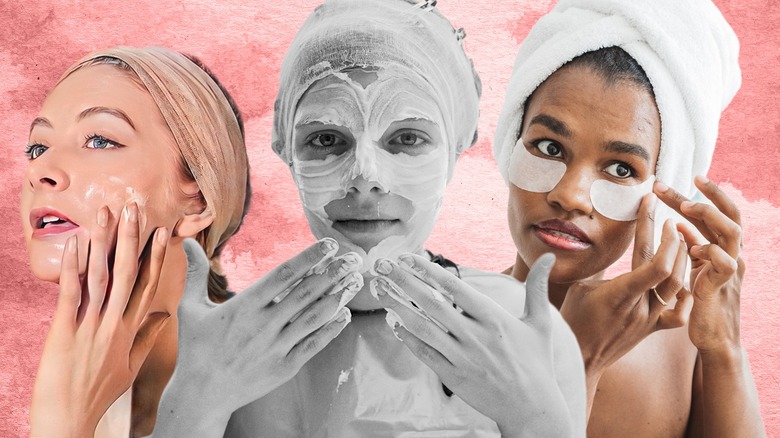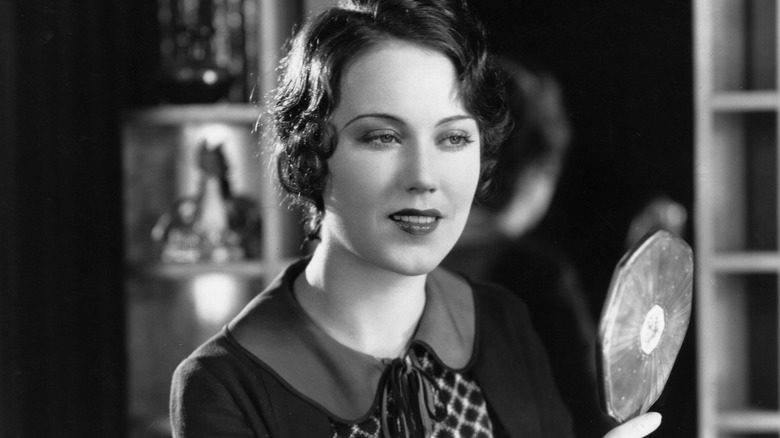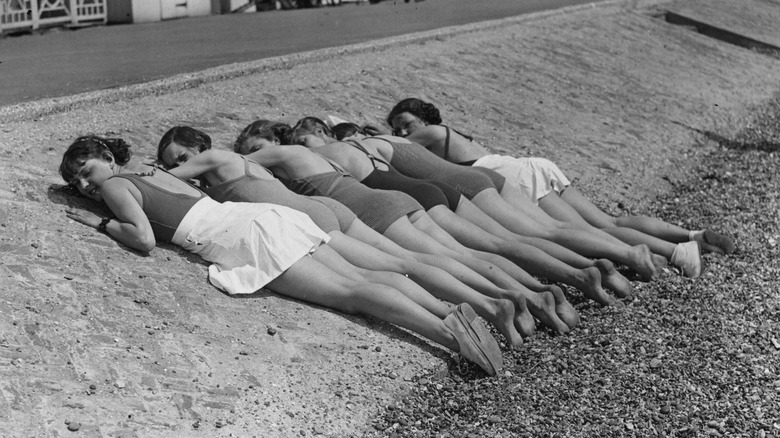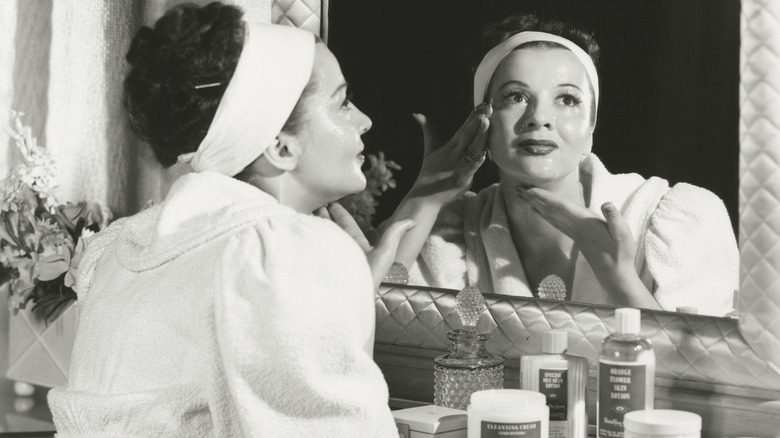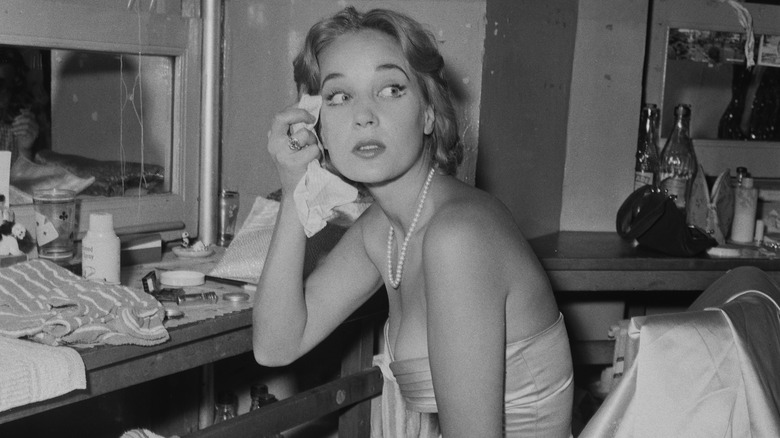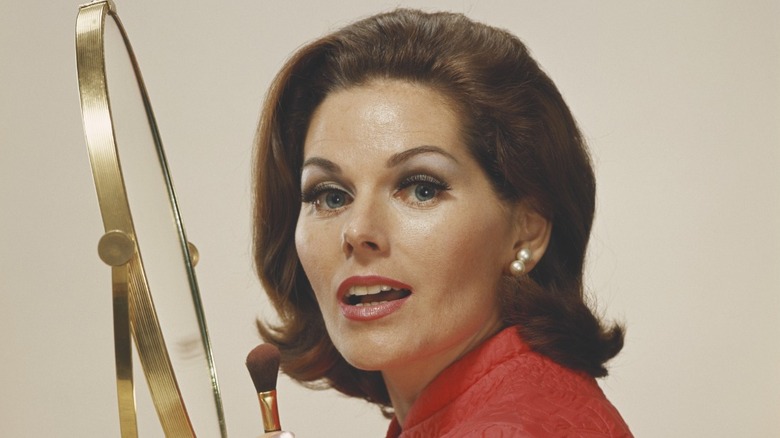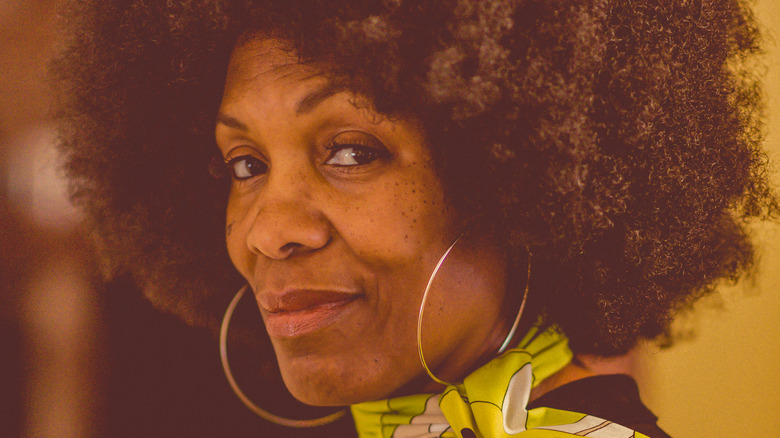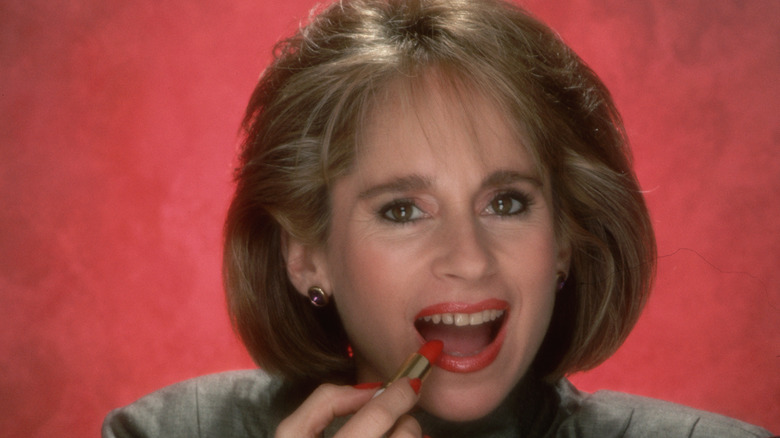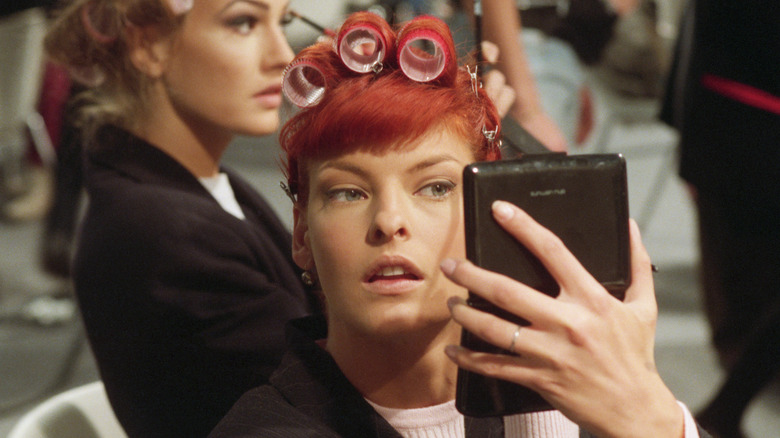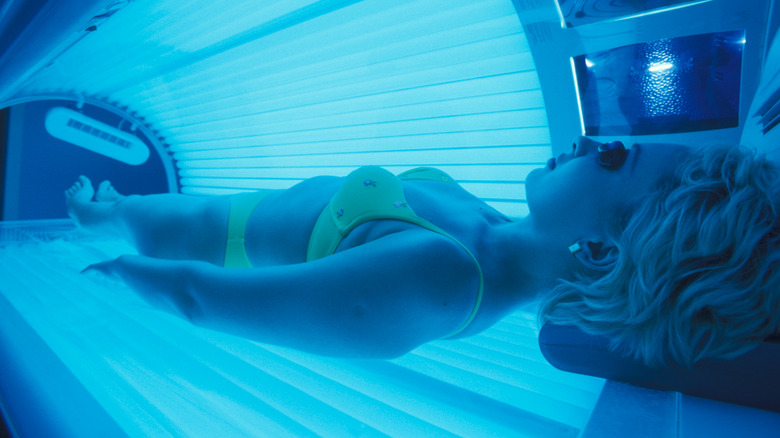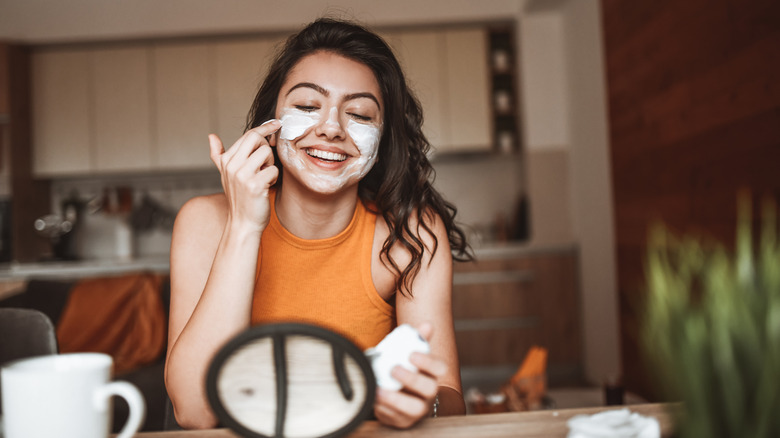100 Years Of Skincare
While beauty standards have fluctuated and changed over time, the act of caring for skin has been a constant. Even ancient civilizations had forms of skincare they made records of. In ancient Egypt, Rome, and Greece, skincare was a regular part of beauty routines. Honey and fragrant oils were common ingredients in skincare concoctions, and sand was sometimes incorporated as a sunscreen. Cleopatra, the queen of Egypt and ancient beauty rituals, was said to bathe in donkey milk because its lactic acid was great for the skin.
By medieval times, skincare became a little more complex, which involved a skincare routine of cleansing, exfoliating, and moisturizing. Not only that, but more than 40 of the ingredients used in medieval beauty remedies in the 12th century are also used for health and beauty purposes today, according to medievalists.net.
By the 1800s, some products that are available today, like rose water, petroleum jelly, and cold cream, were already being used by many to preserve the health and youthfulness of their skin. However, while some of these skincare staples, like Vaseline, are still incorporated in beauty routines, there are many products from the past that have been discontinued because they either weren't effective or were downright dangerous. From the potent face creams of the '20s to the intriguing TikTok beauty trends today, it's safe to say skincare has had quite the journey over the last 100 years.
1920-1929: Youth and pallor are prized
In the 1920s, a youthful, pale look was idealized, and many put significant effort into achieving this. The advent of film may have also played a role in this approach to skincare. Actresses were seeking ways to appear paler on screen because natural skin tones sometimes appeared blotchy in high-contrast black-and-white films.
While the average person may not have had to worry about what their complexion looked like on screen, many women still sought pale, matte skin. As a result, many people applied lightning creams overnight. Astringent lotions were commonly used as cleansers, as were cold creams. To keep shiny skin at bay, vanishing cream was sometimes used before makeup.
Of course, a youthful look was also desired, as the skincare brand Sönd points out that at this time, a woman over the age of 25 "should spend 10 minutes twice a day doing a special face massage to keep skin toned and wrinkles away." Smoothing creams were also used, but some had a dark downside. Gourad's Oriental Cream, in particular, made big promises about its magic abilities to smooth skin and make it appear more youthful. The reality was, though, that it contained mercury and even lead to health problems like loose teeth and dark under-eye circles, per Smithsonian Magazine.
1930-1939: Tans take over
By the 1930s, tanning had become a popular practice (as tanning within the last 100 years has seen major shifts in and of itself). More people sought ways to deepen their complexions, at least during the summer. This gave rise to tanning products like Ambre Solaire from L'Oréal. Cosmetic companies were following suit and providing shades of face powder in deeper shades that mimicked a tan.
While there was a greater range of skin shades available in face powders, that doesn't necessarily mean that more inclusivity was coming from cosmetic and skincare companies. Black consumers were largely ignored. Not only that, but bleaching creams were still widely available and often used once summer was over, and many were done with their tan look. Although many tanning products boasted the ability to both beautify and protect the skin, most of them did virtually nothing to protect the skin from UV rays.
While a love of a sun-kissed look had taken root during the '30s, it was also the time of the Great Depression, which meant the average person didn't have a lot of expendable funds for things like skincare. Although there was a growing market for soaps, lotions, and tonics just for the face, most skincare solutions were relatively simple. Cold cream was an enduring favorite for cleansing, and Camphor Spirit — a product containing alcohol and camphor that is still available today to treat muscle and joint pain — was a common acne solution.
1940-1949: Beauty is your duty
The 1940s were defined in many ways by World War II, and that, in turn, impacted the way that women thought about beauty and their skincare routines. Wearing makeup and taking care of your appearance wasn't just about looking pretty — it was also considered patriotic. As a soldier told Vogue in 1941, "To look unattractive these days is downright morale breaking and should be considered treason (via the National Museum of American History).
It may be no coincidence then that during this decade, special importance was placed on setting aside time to care for yourself and your complexion. Regular cleansing and moisturizing were important for healthy skin, and special beauty routines could be found in magazines. These sometimes included daily washing rituals to be done morning and night, as well as facial massages.
The popularity of tans carried over from the '30s to the '40s, with baby oil as a sunbathing product sometimes being used. Cold cream reigned supreme as a skincare go-to, especially for those with drier skin types. Those with oily skin would often wash their face with standard soap and then apply a moisturizer afterward. Massages were a typical magazine-recommended solution for preventing signs of aging like fine lines and jowls. Exfoliation was also becoming common, with some making a DIY scrub with lemon juice and sugar.
1950-1959: Keeping cleansed is key
A lot was happening in the beauty world in the 1950s. The economy was booming, and that meant the average consumer had more money for beauty purchases. When it came to skincare, keeping skin well-cleansed was essential. Washing the face (along with the neck and ears) twice daily and scrubbing it vigorously with a washcloth became commonplace. Facial steaming also gained popularity.
Although makeup looks were becoming more complex, soaps used for cleansing the face were not. Palmolive soap bars were marketed for all ages and skin types and made big claims about what using their soap could accomplish in terms of beautifying their complexion. Double cleansing was introduced during the '50s, with the first step involving a cold cream that was then wiped off and then using soap and water.
DIY facials were prescribed as a weekly ritual by women's magazines, and the concept of improving circulation to the skin, as well as cleansing and tightening pores, became more popular. Petroleum jelly was still in use as a moisturizer, and more and more women were beginning to look after the rest of their skin, too, with shea butter sometimes used to moisturize the arms and legs.
1960-1969: A break from old traditions
By the 1960s, women were becoming more liberated and were, in turn, liberating themselves from some beauty routines that no longer served them. While some women may have mastered a multi-step skincare routine at this point, cleansing with plain soap and water was pretty common.
More emphasis was being put on grooming as a form of self-expression, and women may not have been as focused on preening and pampering their skin to catch the attention of the opposite sex as they had once been. That doesn't mean that there weren't new developments in the skincare world, though. As the links between skin cancer and overexposure to the sun were being realized, many were now taking the risks of getting too much sun exposure more seriously.
Because of this, some suntan lotions were now having SPF added to them as a form of protection. However, these early SPF lotions only contained between 2 and 4 SPF, which meant they may not have been particularly effective. Along with this, self-tanners were also becoming increasingly available to those who wanted to deepen their complexion without braving sun damage. Around this time, there was also greater awareness and acceptance of darker complexions, too.
1970-1979: Natural becomes a necessity
During the 1970s, the continuation of women's liberation meant attitudes toward beauty, makeup, and skincare continued to change. Between more women rejecting the idea that they needed makeup to appeal to men and the growth of the hippie movement, makeup became less important. As some women were beginning to wear less makeup in general, or at least less apparent makeup, there was a bigger emphasis on healthy, natural-looking skin.
Light coverage foundation was en vogue, so your skin needed to look good on its own. This gave skincare more weight in the beauty world. By now, a skincare routine that involved cleansing, exfoliating, toning, and moisturizing was common practice. An increasing number of people were seeking natural and organic options in their skincare, and more people were becoming concerned about the ethics behind the production of their cosmetics. Things such as animal testing and microbial contamination were common concerns.
While the market for more natural products grew, some brands saw value in taking a scientific approach to skincare. The concept of anti-aging was taking root and becoming a growing presence in products on the skincare market. Some popular products then were Oil of Olay, Covergirl, and Pond's Cold Cream. Healthy tans were in style all year round and were considered a component of a natural look. For this reason, tanning accelerants were popular in comparison to sunscreen, although the effects of sun damage were known at this point.
1980-1989: Skincare is tailored to your age
During the 1980s, self-expression was more important than ever, but so was conforming to beauty standards. The emergence of punk and glam rock influenced wild and dramatic makeup looks for both men and women to show their personalities, but at the same time, many were caught up in the whirlwind of fitness and diet culture, which centered on looking young and thin.
Younger groups were concerned about acne, and the skincare market reflected that. By now, an array of acne products were available, many of which boasted a tingling effect. Exfoliation, physical exfoliation in particular, was also common and was used as a way to help fight signs of aging, as well as brighten skin. DIY skincare was growing, with mud masks gaining popularity.
Even though the concept of anti-aging was realized at this point, products for anti-aging were becoming particularly prevalent. This is also the decade when tretinoin, which is still a popular ingredient in skincare products, was first discovered as a useful anti-aging agent. Collagen was another popular ingredient used to tame signs of aging. The attempts to reduce and smooth crow's feet, fine lines, and wrinkles were in full swing.
1990-1999: Skincare gets more scientific
In the 1990s, awareness of (and interest!) in skincare grew. Makeup looks were less dramatic than in the '80s, and a more clean and polished look was taking over. This involved more conservative makeup and also a focus on healthy skin. Increasingly, hard facts and scientific research were being injected into skincare, and magazines were turning to dermatologists for tips about how to deal with skin issues.
This may have been partly due to new scientific developments in the skincare world. The discovery of the power of AHAs for exfoliating skin lead to a boom in AHA-laden anti-aging products. The usefulness of enzymes and vitamins C and E for improving the look of skin was realized, and retinol was now more popular due to its ability to brighten skin. Astringents were a typical solution for acne, and products like Oxy Pads were a common sight on drugstore shelves.
Brands like St. Ives, Olay, Bioré, and Neutrogena were go-tos for many for skincare in general. In the '90s, more was learned about the sun's effect on the skin, with UVA and UVB rays being recognized as damaging to the skin. As awareness of the sun's harmful effects on the skin grew, so did the quality of sunscreens and the availability of self-tanners. New understandings about the sun's impact on skin didn't stop people from using tanning beds, though, as the popularity of a tanned look would grow in years to come.
2000-2009: Tanning takes over yet again
The love of a good tan truly defined beauty during the early aughts, and for many, that meant hopping in a tanning bed. However, with growing awareness of the damage tanning could cause, more people were opting for spray tans over tanning beds or sunbathing, especially later in the decade. When it came to slathering on self-tanner, there were plenty of options. That said, many self-tanners (and foundations) had orange undertones that were a far cry from a natural look.
Organic products now had mass appeal, reflected by the growing number of natural products in the skincare market. Antioxidants, hyaluronic acid, and sunscreen were also used in moisturizers more often. By this time, there was an abundance of skincare products to choose from, many available at your local drugstore. This made it possible to tailor your skincare routine to your specific needs.
Physical exfoliants like St. Ives Apricot Scrub were a popular choice, as were skincare kits like Proactiv that offered a three-step process to lead you to clear skin (and was advertised by a variety of celebs, from Jessica Simpson to Alicia Keys). Moisturizer was less popular during this time, as some felt it might add too much grease or oil to their skin and lead to breakouts. There were also plenty of interesting DIY options for dealing with acne, like putting toothpaste on a pimple to make it disappear.
2010-2019: Healthy skin is sought after
The 2010s were a time when skincare truly boomed. Not only that, but the average skincare addict likely had an increasing amount of knowledge about how to take care of their skin, with many becoming aware of things like the difference between chemical and physical exfoliation or the importance of sunscreen for preventing sun damage. While some may have used only a few skincare products, complex regimens that required multiple steps and multiple products and tools became more normal.
While the late 2000s to early 2010s was more about heavily-applied matte foundation and contouring, more makeup wearers were craving natural and less effort-intensive looks. Because of this, dewy, glowing skin became desirable.This meant an emphasis not just on skincare but on skincare rituals that made your skin luminous. Products like facial oils became popular for moisturizing the face.
K-beauty also became extra popular at this time, and in many ways, K-beauty was a step ahead in its approach to healing and nourishing skin. With an emphasis on embracing your skin's natural beauty, attitudes toward aging and skin, in general, started to shift. The term "anti-aging" became less popular as magazines began to drop it and instead focused on embracing healthy mature skin. Inclusivity also became increasingly important in the cosmetic world, especially pertaining to offering more shades of makeup for a wider range of skin tones.
2020-Present: Skincare information abounds
The coronavirus pandemic undoubtedly impacted many people's skincare practices. Quarantining meant skipped visits to estheticians. More time alone at home meant more people took skincare into their own hands. By now, there's a wealth of information about skincare online for anyone interested enough to look it up. However, this abundance of information means that some of it contradicts. One place that provides plenty of skincare tips, good, bad, and otherwise, is TikTok, which is rife with quality info and questionable trends that divide some skin experts.
For example, you have trends like slugging, a modern re-branding of the use of an old skincare product, which involves applying a thin layer of petroleum jelly to your face at night to seal in moisture. Although this old stand-by might not be for everyone, it could benefit those with dry skin types. On the other hand, though, you have the viral TikTok advice for the banana peel trend, which involves rubbing banana peels on your skin. While this may not be particularly harmful to try, it may not be all that effective for introducing nutrients to the skin, either.
There are also plenty of trends whose values are debatable. Many swear that double cleansing is the way to go, while some believe that it dries the skin out. Either way, the average skincare aficionado is more informed than ever and can find almost any product or tool they may need in drugstores or online.
